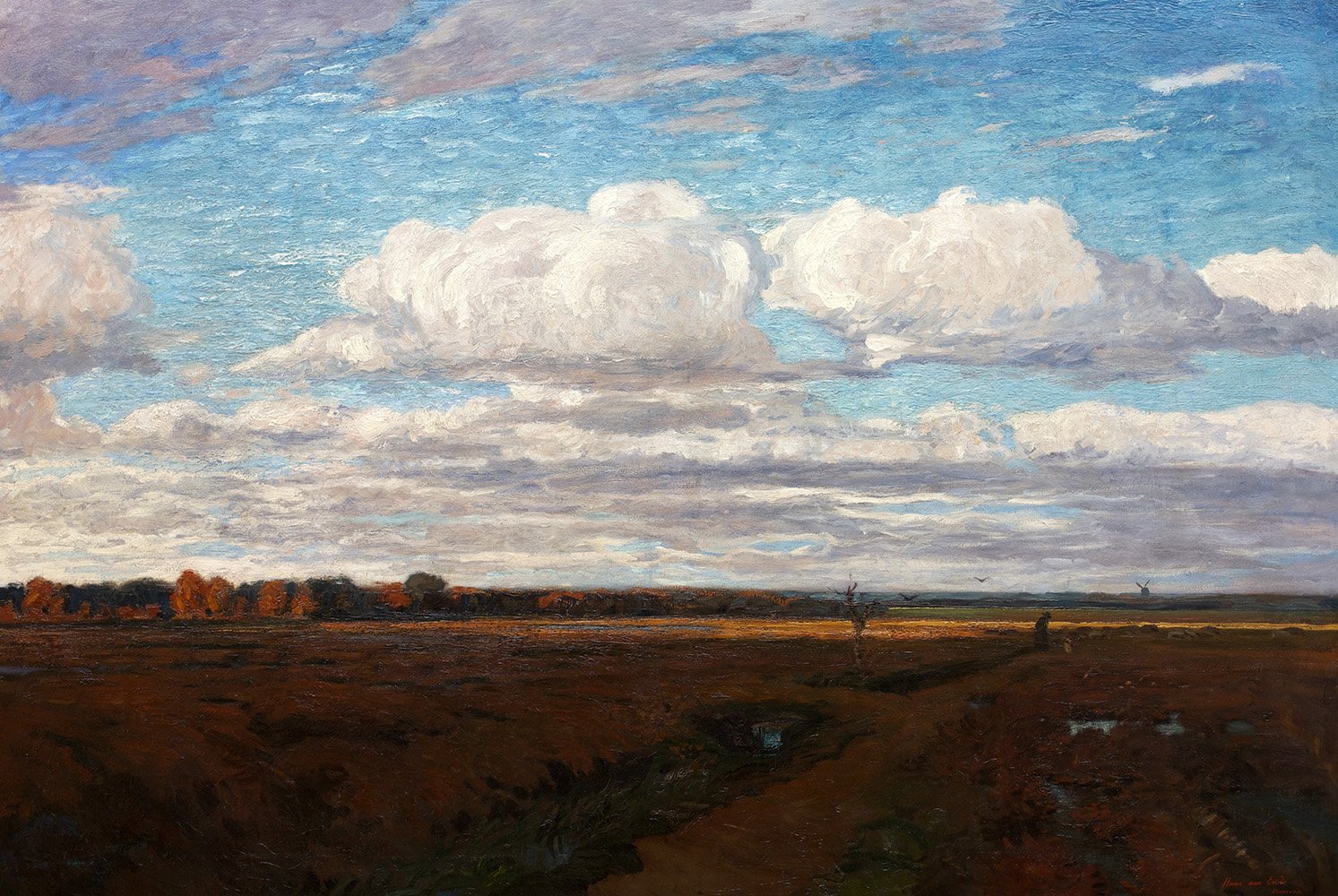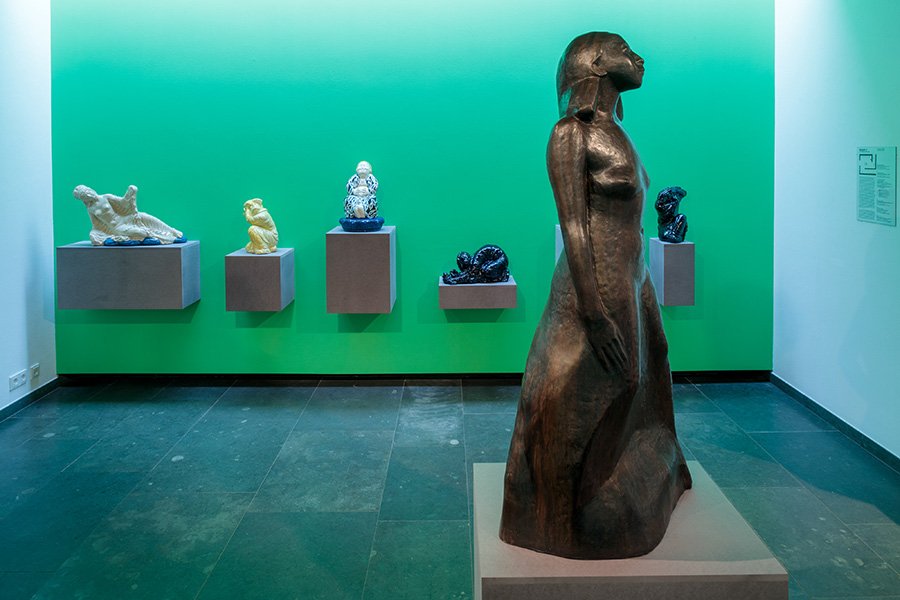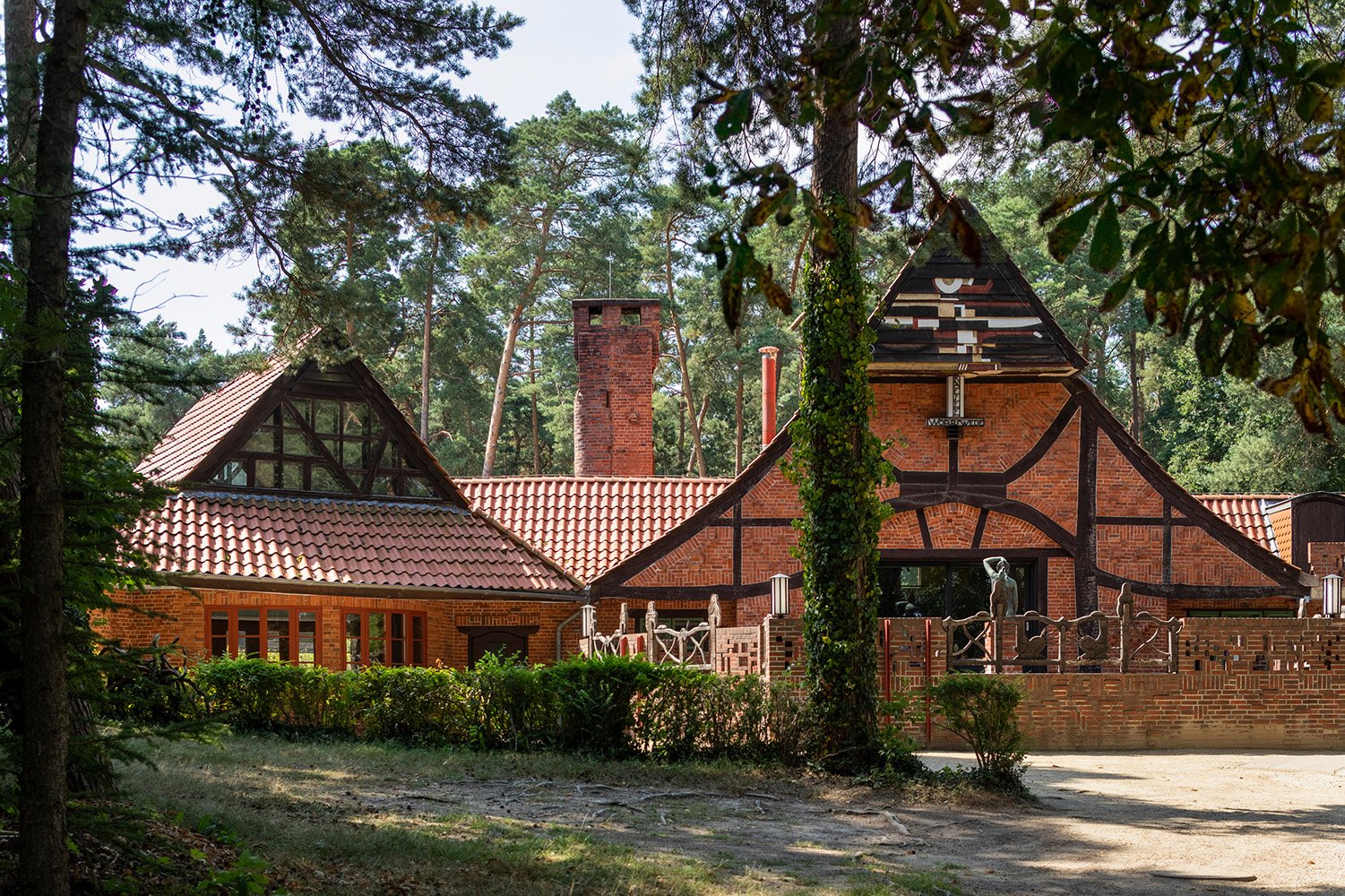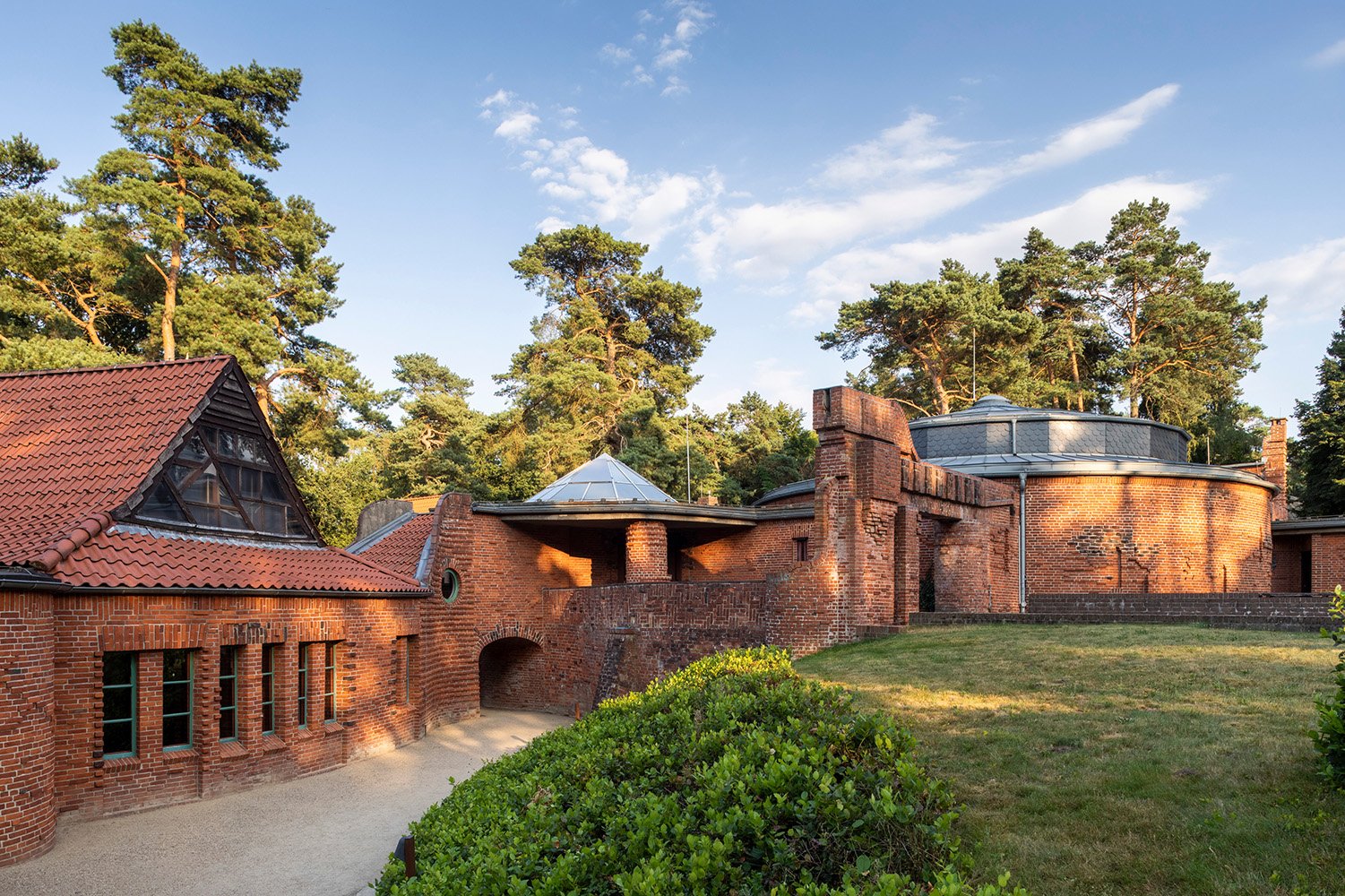Große Kunstschau
Enjoying art in the heart of the artists’ village
The Collection
Masterpieces of the First Generation of Worpswede Painters
The artists of the first generation in Worpswede were all equally captivated by the unique vastness of the Teufelsmoor, the peculiar interplay of bright luminosity and magical darkness in the sky and earth, over the waters, by day and by night. This fascination is vividly expressed in Fritz Mackensen’s Torfkaehne auf der Hamme, Hans am Ende’s Weites Land, and Carl Vinnen’s Mondnacht. Paula Modersohn-Becker described this landscape as a ‘wonderland,’ filled with ‘mood to the tips of one’s fingers.’
Through the rotating display of works, visitors continuously experience the diversity and depth of our collection in new and exciting ways.
Artist-led tour
Margaret Kelley. Tapestries from the cycle ›A Leap of Faith‹.
Sunday, April 27, 11:30 AM - 12:15 PM
Sunday, May 11, 11:30 AM - 12:15 PM
Sunday, May 25, 11:30 AM - 12:15 PM
Guided Tours
Experience Art More Intensely
Tickets and Opening Hours
Your Visit to the Worpswede Museums

Hans am Ende
Weites Land, 1900

Bernhard Hoetger
Licht, 1912

Bernhard Hoetger
Tänzerin Sent M'Ahesa,
1926, Ausstellungsansicht 2024

Paula Modersohn-Becker
Schützenfest, 1903

Paula Modersohn-Becker
Junge am Wasser, 1904

Carl Vinnen
Mondnacht, 1900

Pacheco Dehne
Companion, 2021

Heinrich Vogeler
Der Sommerabend (Das Konzert), 1905
Große Kunstschau
March 23 to June 9, 2025
Margaret Kelley. Tapestries from the Cycle A Leap of Faith
Since her first stay in Worpswede, the artist Margaret Kelley, who was born in Los Angeles, USA, has been deeply inspired by the light of the Worpswede landscape.
She first came to Worpswede in 1991 through a scholarship at the artist houses founded by Martin Kausche. After a few more stays, she returned to settle there, continuing and developing her artistic work at this place that became so special to her. Over the years, her work has gained depth and scale—both literally and materially, as well as in terms of conceptual understanding. Many of her motifs originate from the experience of a landscape impression, such as the pearling of the waves on the Isar. The emotions and excitations triggered by these experiences are integrated into her monumental paintings, where she addresses questions of reality and truth, of presence and transience.
The exhibition will feature, for the first time, the large-format tapestry paintings.
The House
A Total Work of Art Combining Architecture, Art, and Ideas
Inspired by his encounter with Paula Modersohn-Becker, the sculptor Bernhard Hoetger arrived in Worpswede in 1914. He stayed for fifteen years, realizing many of his architectural ideas during that time. His most significant creations were three interconnected buildings constructed sequentially: the Kaffee Worpswede, the Logierhaus, and the Große Kunstschau, built between 1925 and 1927.
This ensemble served as an exhibition space for local artists. The Große Kunstschau, built of red bricks, is designed like a sculpture, centering around a rotunda with a suspended dome. Its skylight allows natural daylight to illuminate the circular room, creating a unique setting for the presentation of works by Heinrich Vogeler, Otto Modersohn, Paula Modersohn-Becker, Hans am Ende, Fritz Overbeck, Fritz Mackensen, and Carl Vinnen.

Coffee Worpswede (Crazy Coffee) designed by Bernhard Hoetger

Staircase to the Große Kunstschau

Bernhard Hoetger Ensemble Coffee Worpswede (Crazy Coffee) and the Große Kunstschau (Rotunda Building)

Coffee Worpswede (Crazy Coffee)

The Rotunda in the Große Kunstschau

The former sales room
Expansion of the Große Kunstschau
The ›Ludwig Roselius Museum for Prehistory and Early History‹ was built in 1971, directly adjacent to the Große Kunstschau, by Bremen architect Prof. Gerhard Müller-Menckens to house Ludwig Roselius's collection on this subject. The low-rise building included six halls and a foyer arranged around a courtyard, offering an exhibition area of approximately 500 square meters. In 2010/11, the building was expanded to 640 square meters and equipped with a climate-controlled storage area. The former museum shop, preserved in its original state, now provides an overview of Bernhard Hoetger's creative work.
The Kaffee Worpswede
With the construction of the Kaffee Worpswede in 1925, Bernhard Hoetger laid the foundation for the current ensemble of the Große Kunstschau. It consists of three sections, with the central part featuring prominent gables and roof spires. Its vaulted, circular interior is oriented towards a stage that opens outward to a terrace. A striking feature in the center of the room is the Weltenesche (World Ash Tree), a wooden sculpture by Hoetger. Because of its half-timbered facade and exotic roof spires, the Kaffee Worpswede became popularly known as the ›Crazy Café‹.
The Logierhaus
The Logierhaus, built next to the Große Kunstschau, served as a modest hotel until 1978. From 1982 to 2004, the building was used as an art library (Artothek), also hosting exhibitions during that time. After extensive renovations in July 2007, it became the headquarters of the Cultural Foundation of the Osterholz District (Kulturstiftung Landkreis Osterholz).
Bernhard Hoetger
The Border-Crosser
Bernhard Hoetger (1874–1949) was a versatile artist and architect, whose work was strongly influenced by the ideas of Expressionism. Initially trained as a sculptor, Hoetger combined sculptural elements with architectural concepts, making him a central figure in the artistic avant-garde.
His friendship with Paula Modersohn-Becker inspired him to move to Worpswede in 1914, where he later created significant works that profoundly shaped the town.
Plan your Visit
Tickets, Guided Tours, Cafés, Shops, Holiday Apartments
Guided Tours
Discover More Worpswede Masterpieces
The Other Museums in Worpswede










